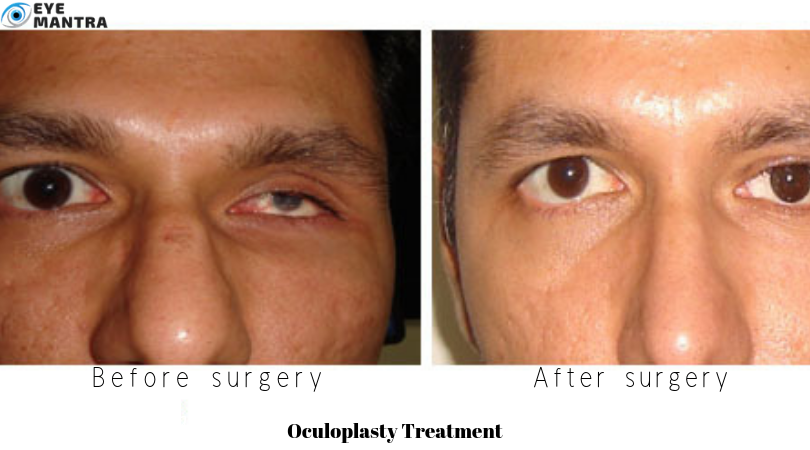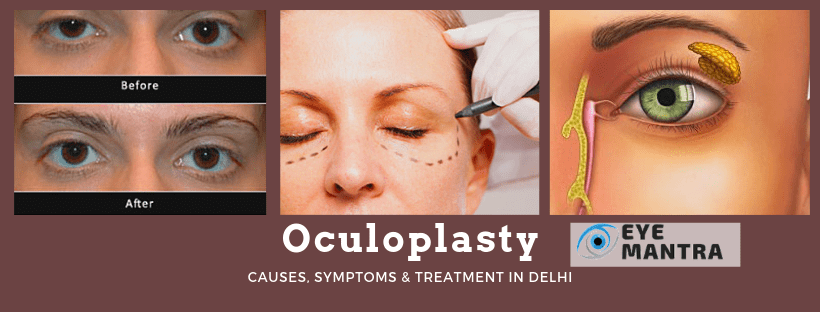Contents
About Oculoplasty

Oculoplasty is a specific section of Ophthalmology, which centres on abnormalities of the structures around the eye.
The surgery of Oculoplasty is conducted to develop function, comfort and look for the following states:
- Deal with the orbit (eye socket) difficulties
- Improvement of droopy eyelids (Ptosis)
- Repair of tear ducts
- Deals with the rebuilding of the eye and associated structures.
- Helps in removal of tumours in around the eyes and in orbital fracture repairs.
- Tear Drainage Difficulties
- Eyelid Malposition
- Skin Cancers of the Eyelid
- Eyebrow Difficulties
Most of the times, an annuloplasty surgery is most suitable for medical problems linked to the eyes also the cosmetic look of the eyes and encircling areas. Oculoplastic procedures often have both functional and aesthetic purposes.
For example, Blepharoplasty a system for extreme and droopy eyelid skin may develop an external vision also facial beauty and rejuvenation. It points at developing function, comfort and appearance.
Why there is a need to perform Oculoplasty?
- Congenital (By Birth): Oculoplasty surgery can be conducted for congenital deformities that is a gap in the eyelid (Coloboma), shrunken eyelids, Ptosis, blocked tear drainage passages preceding to watering and infection in newborn babies.
-
Traumatic (Injury): It can be conducted for injury to the eyelids, tear drainage passages, scar development, loss of eyeball, tumours etc. Oculoplasty surgery saves from eye damages and give better eye functioning and look.
-
Age-related: Oculoplasty operation can be conducted for problems in-turning or out-turning of eyelids and rubbing of eye-lashes on the eye (Trichiasis). Oculoplasty surgery gives an efficient solution for correcting eye difficulties.
Symptoms of Oculoplasty
- Droopy eyelids or eyebrows (Ptosis)
- Blepharoplasty (Eyelift)
- Eyelids turning in or out (Entropion / Ectropion)
- Extreme watering because of tear duct or tear sac problems
- Frequent prescription changes in glasses and contact lenses
- Growths or Tumors (Cancer of Eye)
- Excessive blinking or uncontrollable eye closure
- Twitches
- Excessive wrinkles/skin folds around eyes (Cosmesis)
- Thyroid imbalance
- Paralysis affecting the face
- Anophthalmia – Loss of eye due to injury or infection wherein artificial eye fitting is needed, to improve the appearance
- Blinking of eyes more than necessary
- Eyelids Hanging Downwards (Ptosis)
- Twitching of eyes
- Wrinkles, scars or folds around the eyes
- Eyelids tearing in or out (Entropion/Ectropion)
- Blocked Tear Ducts (NLD Block)
- Tumours growing inside or surrounding the eye
- Blepharoplasty or excessive fat in eyelids
- Bulging Eyes
- The absence of an eye
- Orbit Tumors
- Burns of the eye
When to visit the Doctor
Visit your doctor directly if you have:
- Pain does not stop after consuming pain relievers also.
- Symptoms of infection – an increased swelling and redness, fluid flowing from your eye.
- Blurred vision
- An incision that is not improving
- The vision that gets more critical
Conditions for Oculoplastic Referral
People of various age group can have problems with the areas around the eyes. Some eye birth defects can be seen in children in early childhood. These conditions in children need to be approached early as they may hinder visual growth and lead to amblyopia.
Eye Injury, infections or tumours can affect any age group and require immediate attention and control. In the elderly weakness of eye and face muscles begin to watering and drooping of the lids or skin folds that hinder healthy function. There are several situations for which you might be asked for an Oculoplastic surgeon.
Orbits / Eye Sockets
The eye socket includes the muscles that move the eye and the bones and fat that shields it. Usually, the eye socket can be affected by injury, inflammation, tumours, or by specific medical disorders. The outcomes of an injury to the orbit may involve deformity, double vision (diplopia) due to injury in the muscles that move the eye or also loss of vision.
An Enucleation is the surgical elimination of an eye is only done under drastic circumstances such as to eliminate a malignant tumour in the eye or to reduce extreme pain in a blind eye. Following enucleation, an artificial eye i.e.ocular prosthesis is implanted as a cosmetic replacement for the real eye. Volume augmentation is needed for better cosmesis, it is done with fixing the intraorbital implant.
Evscerations
An Evisceration is the elimination of the eye’s contents. It further leaves the scleral shell and extraocular muscles intact. The process is normally performed to decrease pain or cosmesis in a blind eye. An ocular prosthetic can be applied over the weakened eye to enhance cosmesis. Intra orbital implants provide better motility to the prosthesis.
Treatment and self-care at home after surgery
Your improvement will depend on your health and the type of surgery you have. Your doctor will give you special instructions to comprehend. Keep some points in mind that are mentioned below :
- You may have unusual pain, wounding, or swelling after surgery. Place cold packs over the area to reduce swelling and bruising. To shield your eyes cover the cold pack in a towel before applying it.
- You must avoid activities that increase your blood pressure for around 3 weeks. This involves things like as heavy exercise and lifting weighty objects. Your doctor will tell you when it is secure to start these activities again.
- Avoid the consumption of alcohol for at least 1 week later surgery. You may also require to stop some medicines.
- Be careful when bathing for at least a 1 week after surgery. Your doctor will provide you with instructions for bathing and washing the area around the surgery.
- Have a proper diet as suggested by your doctor as eye nutrition also helps in recovering fast.
- Cover your head up with a few cushions to sleep for about 1 week after surgery. This will assist in preventing swelling.
- You must see your doctor for a follow-up visit within 7 days after your surgery. This will let you know how are you recovering.
- Most people can return to work and social activities in around 2 weeks after surgery. The amount of time can differ, depending on the type of surgery you had. Your doctor will provide you with special instructions.
- You may see increased tears, feeling more sensitive to light. Even, can notice blurring or double vision for the first few weeks.
Cost of Oculoplasty in Delhi
The cost of oculoplastic surgery usually depends on the condition that needs to be treated, it can be securely said that it is no less than Rs 1,25,000 per eye. The specific cost can be defined in the eye examination at our eye hospital in Delhi Eyemantra. Where our surgeons would suggest surgery based on your problem and your age. It must be noted that the cost of these methods is quite huge for people with a long history of eye problems also ones with age more than 60 years.
Conclusion
Oculoplasty is also known as ophthalmic plastic surgery. It is surgery with relation to the eye and its encircling structures. The oculoplastic treatment in Delhi begins with an examination of the prevailing state of the patients and what signs and difficulties they are having which are producing a hindrance in their vision. Once the test is done, the patients are recommended with the relevant options of oculoplastic, and they are free to pick any of them. With the latest tools and advanced technology available with the oculoplastic surgeons, the surgery becomes easy for the patients.
The ophthalmologists at Eyemantra are specially trained in the field of oculoplastic that is a combination of ophthalmology and plastic surgery. For oculoplastic surgery, you can visit or website Eyemantra. Its is the best place to get proper treatment. Its is a well-known eye hospital in Delhi.
We also offer various services related to eye problems like Retina Surgery, Specs Removal, Cataract Surgery, and many more. Ou experts are there to guide so what are you waiting for the book your appointment with us and reap the discount on various services. To book an appointment call at +91-8851044355 or mail us at eyemantra1@gmail.com.
Related Articles:
Do’s and Dont’s for protecting your eyes while playing holi
Convergence Exercises: Symptoms of Insufficiency & Treatment
